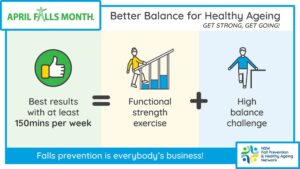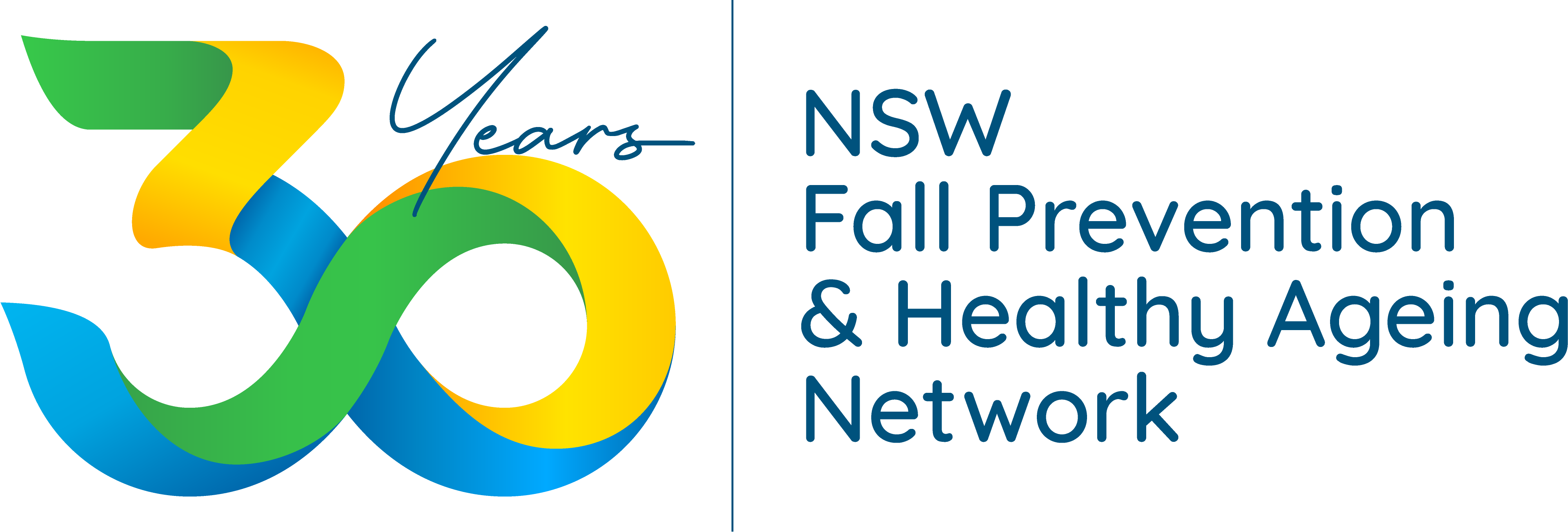Starts: April 1, 2025 Theme: Falls Prevention is Everyone’s Business
April Falls Month® is an annual campaign to raise awareness about the impact of falls and to promote the latest best practice fall prevention strategies. This year, the overall campaign goal is to make use of all available resources to reduce falls risk, get active and improve balance for fall prevention.
The Falls Prevention is Everyone’s Business campaign aims to help Australians find appropriate exercise programs to meet your needs and interests. This campaign includes toolkits for Health Professionals and Fitness Trainers to help you promote Falls Prevention is Everyone’s Business to your existing clients and to help you reach older adults who are looking to start an exercise program. These resources compliment a public awareness campaign which is being carried out through media, Health Networks and organisations advocating for older people and we hope for them to be recognised by adults seeking to begin an exercise program.
These resources are freely available below to be downloaded and shared.

Resources to support and promote your work in fall prevention
We have developed a number of social media tiles for you to use to promote the campaign and your business.
Suggested text to share with social tiles:
#AprilFalls month is a great time improve your strength and balance, I/we can help you get started and keep you on track. Contact us for more info / book an assessment on name@email / phone xxxx”
Contact your local Exercise Professional tile
Exercise guide tile
ESSA branded campaign tile for EP’s
We have also developed resources which can be used in any April Falls event:
- 3×3 Healthy Ageing Challenge
- Healthy Eating Poster
- Daily Physical Activity Poster
- Powerpoint presentation (in development) providing an overview of the problem of falls, the evidence for fall prevention and a number of useful resources to help in any fall promotion program for the following settings:
- Microsoft teams / Zoom background
- Email signature

Community Provider Resources
Hospital Resources
World Guidelines for fall prevention released!
World guidelines for falls prevention and management for older adults: a global initiative
Montero-Odasso, M., van der Velde, N., Martin, F.C. et al. 2022. doi:10.1093/ageing/afac205
Age and Ageing, Volume 51, Issue 9, September 2022
pdf available
The World guidelines for fall prevention and management for older adults were launched at the recent Fragility Fracture Network Congress in Melbourne last week. Developed by a task force of 96 experts across 39 countries they aimed to provide guidelines for healthcare professionals working with older adults on how to identify and assess the risk of falls and identify which interventions, alone or in combination, to offer as part of a person-centred approach.
Assessment tools for Fall Prevention
- Falls Risk Assessment Tool (FRAT) assessment tool and Instructions for use.
The 4-item PH-FRAT is a popular, moderately predictive, reliable and brief method of screening fall risk in subacute and residential aged care. Journal article - Short Physical Performance Battery (SPPB) assessment tool and Instructions for use.
A short 3 task physical assessment tool measuring balance, gait and strength. Journal article - Quickscreen
The NeuRA QuickScreen © Clinical Falls Risk Assessment is a multifactorial assessment tool which was designed specifically for use in clinical settings. The assessment also allows the user to calculate the combined risk increase that the identified risk factors present for future falls. The inclusion of this scoring system in the QuickScreen © allows for the identification of people who are at a high risk of falling, in addition to its ability to determine which specific factors contribute to that risk. Journal article
Find an Exercise Program or Exercise Provider
- Active and Healthy – find an exercise program in your local area or virtual program across NSW
